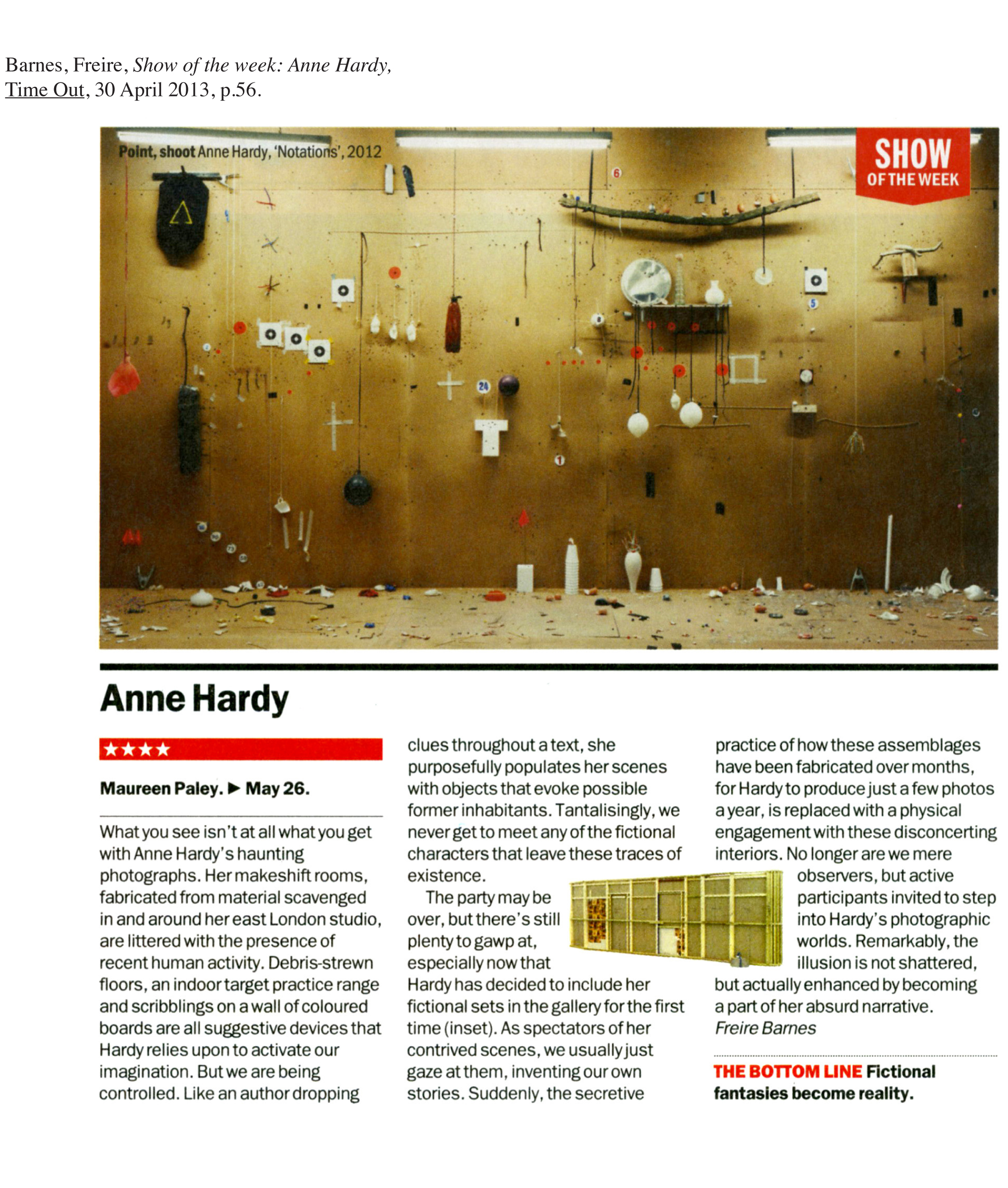| Time Out, Freire Barnes — 2013 | |||
| What you see isn’t at all what you get with Anne Hardy’s haunting photographs. Her makeshift rooms, fabricated from material scavenged in and around her east London studio, are littered with the presence of recent human activity. Debris-strewn floors, an indoor target practice range and scribblings on a wall of coloured boards are all suggestive devices that Hardy relies upon to activate our imagination. But we are being controlled | Like an author dropping clues throughout a text, she purposefully populates her scenes with objects that evoke possible former inhabitants. Tantalisingly, we never get to meet any of the fictional characters that leave these traces of existence.The party may be over, but there’s still plenty to gawp at, especially now that Hardy has decided to include her fictional sets in the gallery for the first time (inset). As spectators of her contrived scenes, we usually just gaze at them, inventing our own stories. | Suddenly, the secretive practice of how these assemblages have been fabricated over months, for Hardy to produce just a few photos a year, is replaced with a physical engagement with these disconcerting interiors. No longer are we mere observers, but active participants invited to step into Hardy’s photographic worlds. Remarkably, the illusion is not shattered, but actually enhanced by becoming a part of her absurd narrative | 
Freire Barnes, Time Out says, Wed Apr 24 2013 |